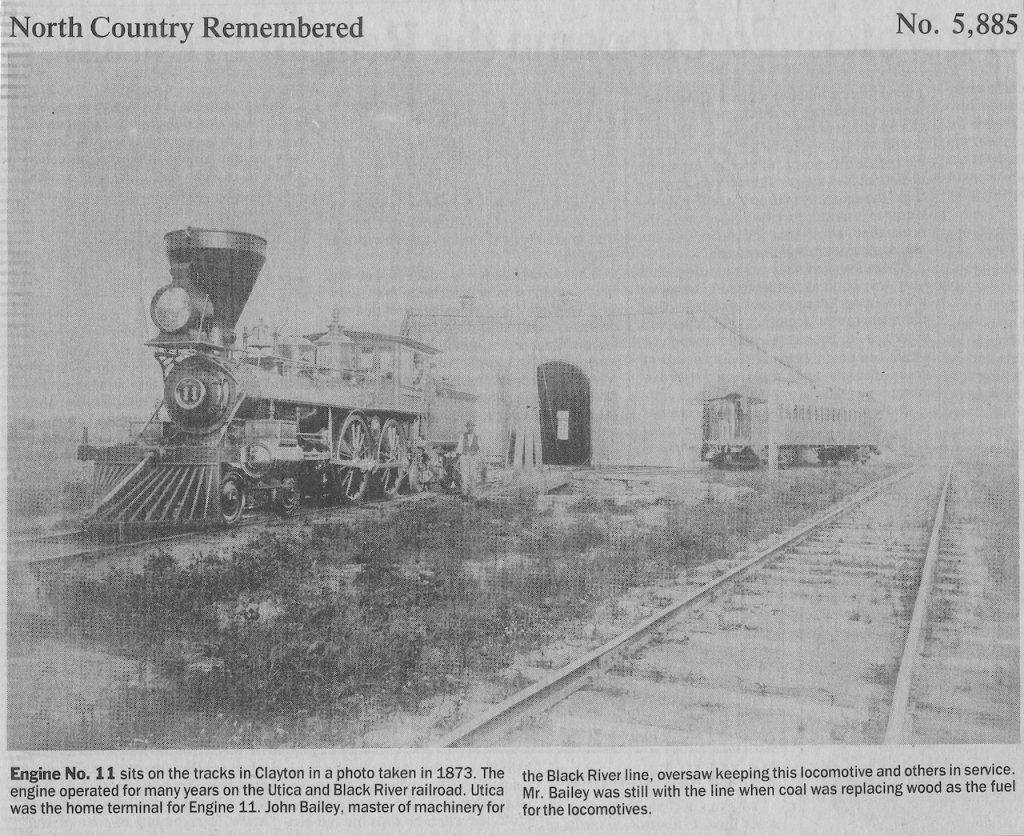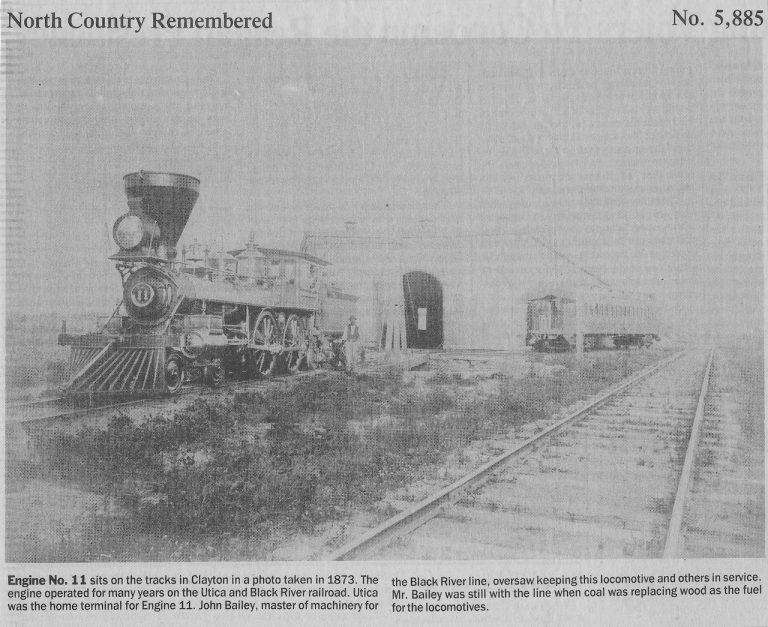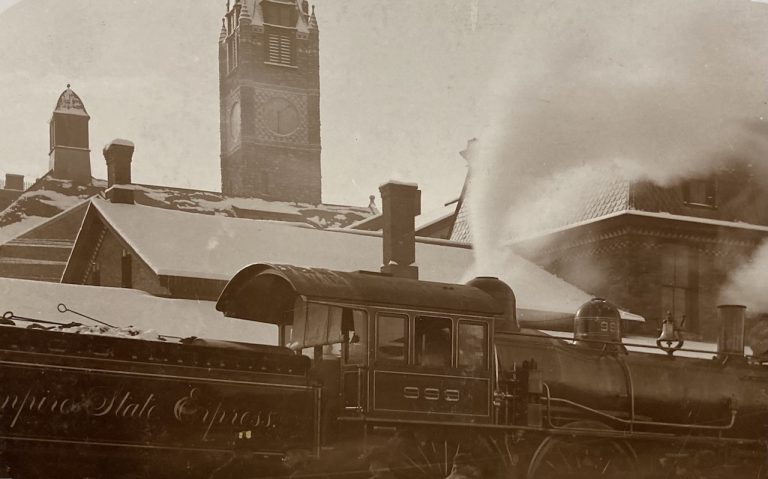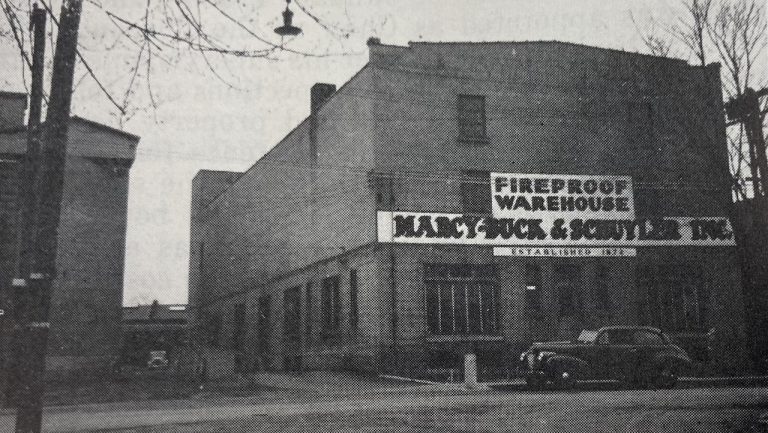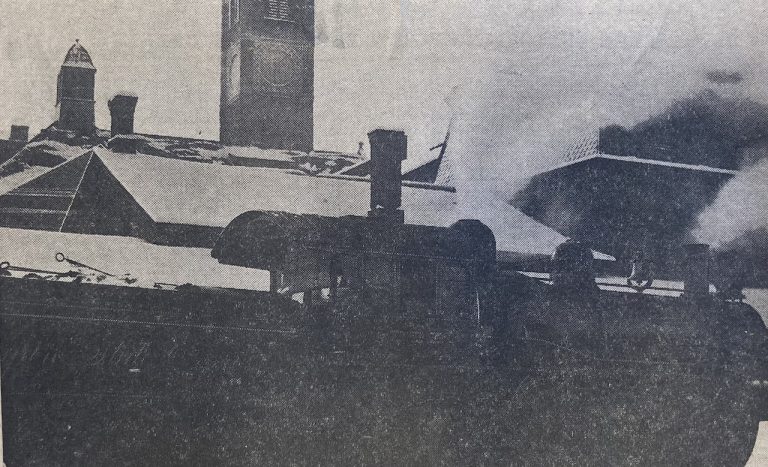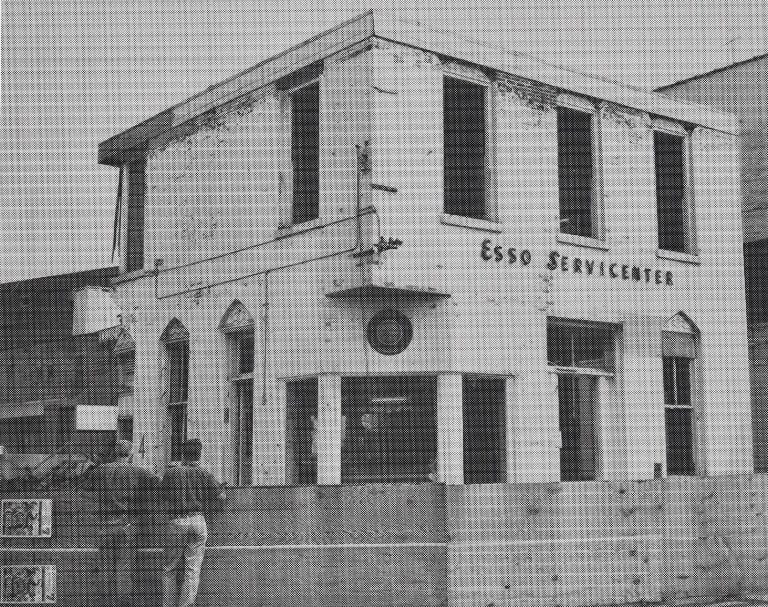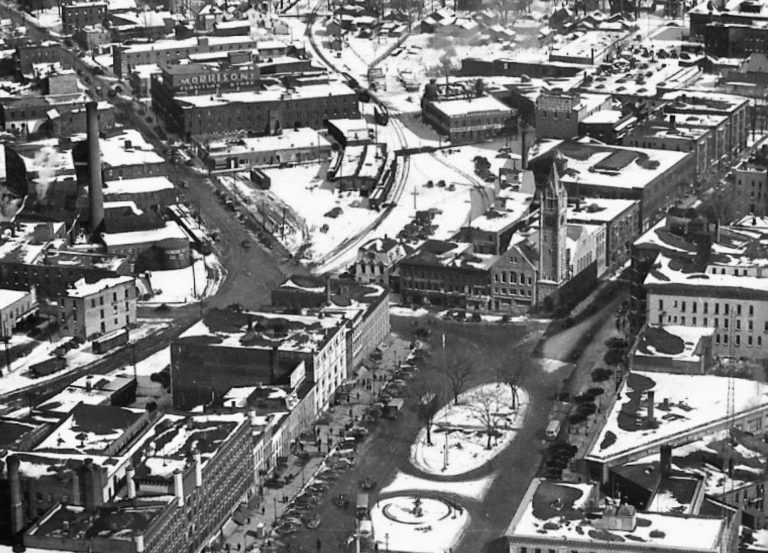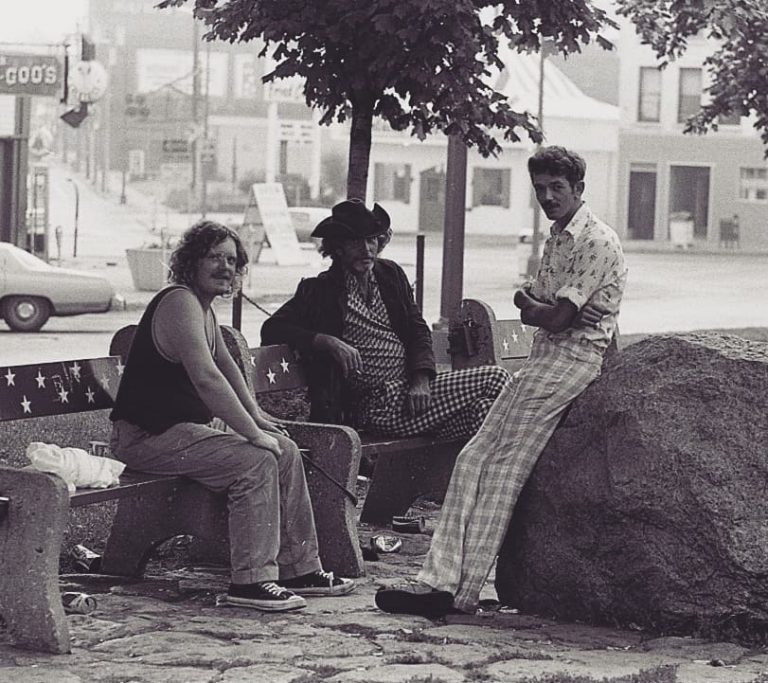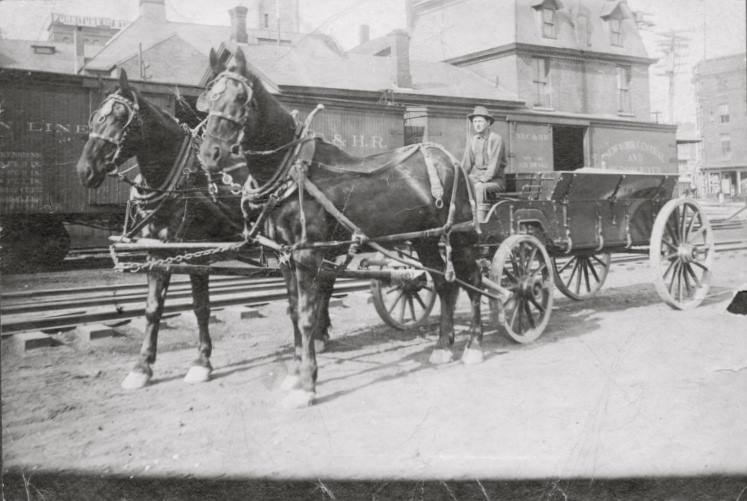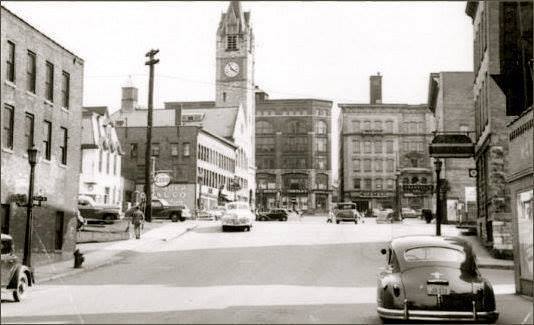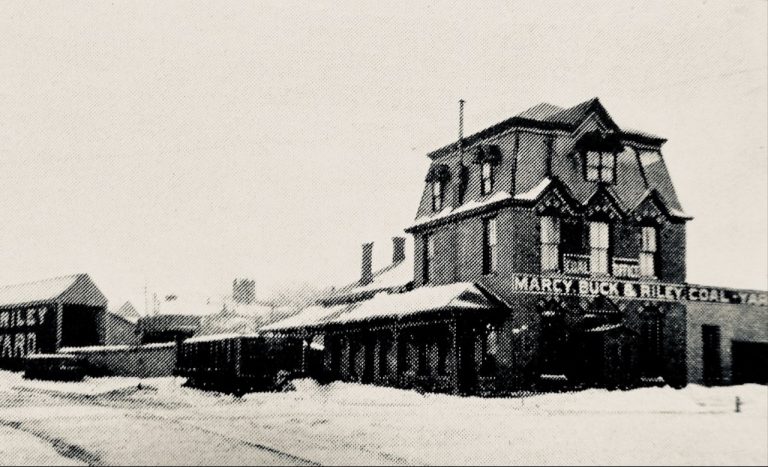Carthage, Watertown & Sackets Harbor Rail Road Depot, Built in 1871, Becomes Marcy-Buck Building
Before becoming the Marcy-Buck building, which was only one of many variations of business names attributed to Richard Marcy‘s initial coal business over the years, the three-story brick building on the corner of Mill and Factory Streets was initially built as a passenger depot for the Carthage, Watertown & Sackets Harbor Rail Road, herein known simply as CW&SHRR.
(Note: It was actually the Utica and Black River Rail Road which was built in stages and consolidated as part of the New York Central Rail Road, but went by CW&SHRR, which finished the line to Sackets Harbor in 1875.)
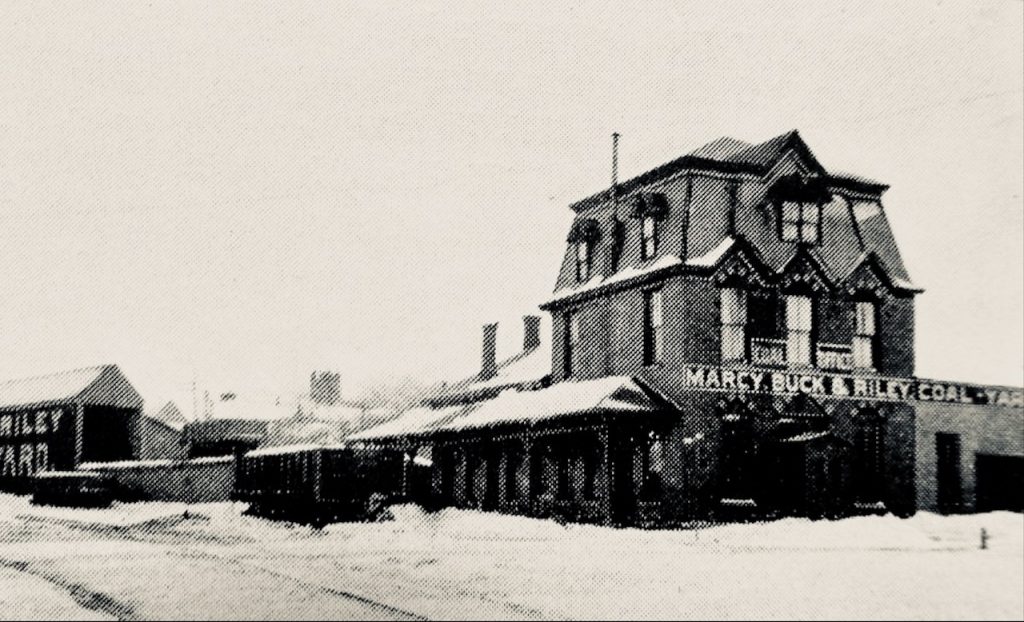
Richard Marcy was born in Kildare, Ireland, and came to the United States as a three-year-old when his parents settled in Utica, N.Y. He became involved with the railroad, specifically the Black River Rail Road, at an early age and worked as part of the construction gang to build it. Upon its completion, he would be the first conductor of a freight and passenger train on the new line.
By May of 1871, the CW&SHRR had incorporated, and the tracks for the Carthage and Watertown Rail Road portion were progressing through the city of Watertown, with the new passenger depot at the junction of Factory and Mill Streets underway as well. As noted, in 1875, the stretch to Sackets Harbor would be completed.
As told in Through Eleven Decades of History: Watertown by Joel H. Monroe —
When the Watertown & Carthage Railroad was completed in 1872, Mr. Marcy moved to Watertown and from that time on to his death he was a prominent bushiness man and respected citizen. At the time of moving to the city he started the coal and wood business in a small way. This he carried on till 1887, when Charles W. Hackett of Utica, a man of political fame in the state, became a partner of Mr. Marcy and from that time on for several years they controlled the coal business on the Utica & Black River Railroad. This naturally strengthened along the Watertown business until the local trade became large and profitable.
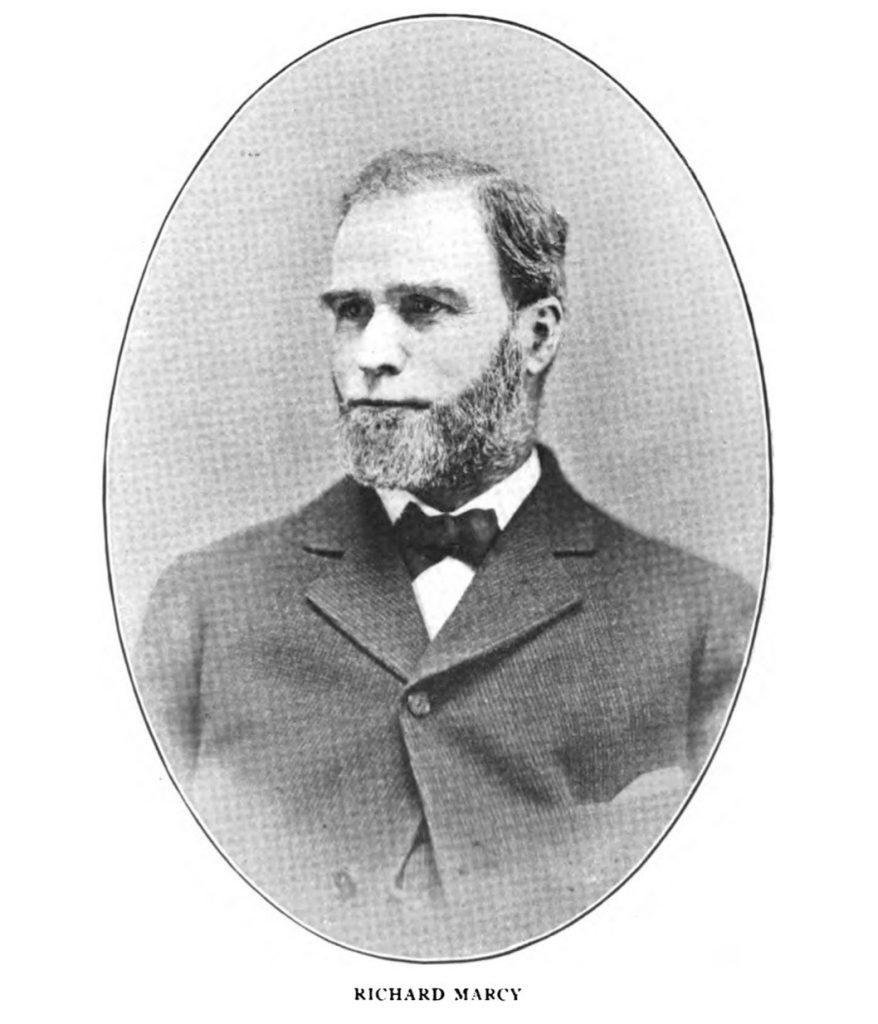
Marcy would marry Lydia Ann Roberts in 1863, and together they had two daughters, one of whom married Harry W. Taggart and the other, Mary Marcy, to Robert J. Buck. Buck became a partner with Marcy in the coal business and continued running it as Marcy-Buck after Richard Marcy died in 1906. Philip Riley would enter the picture, ultimately making it Marcy-Buck & Riley.
After the death of partner Philip Riley in 1913, the name would become the Marcy-Buck Company until merging with Winslow Trucking Company in 1930, owned by future Watertown mayor Charles Winslow. Winslow’s headquarters were at 588 Morrison, a fire-proof warehouse that still is in use today and home to Community Action Planning Housing & Energy Services.
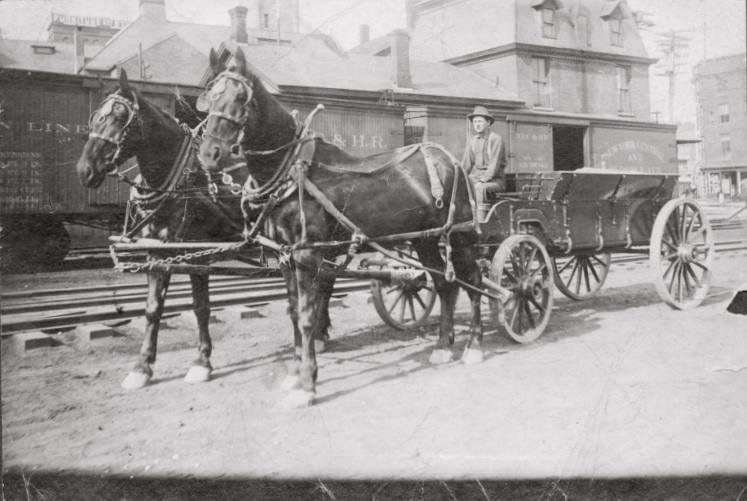
It was announced in late December 1936 that the offices of Marcy-Buck & Winslow, Inc., located at 102 Mill Street, would move to the Tyler Building at 434-438 Court Street. Empire Petroleum Products would take their place. The building, owned by the New York Central Rail Road system, had been leased by some derivative of the Marcy Coal Company for the previous 50 years.
The actual move wouldn’t occur until May 1937, but the Marcy-Buck company would not completely leave the location and continue to have an office there. In 1938, Robert J. Buck formed The Mill Street Coal Company, Inc., with a capital of $5,000. For whatever reason, it was later known as the R. J. Buck Coal Company, Inc.
After the Marcy-Buck & Winslow Company merged in 1930, they also occupied the fire-proof warehouse on Morrison Ave where Winslow originally had his trucking company. The company would move from the Tyler Building at 436 Court Street to Morrison Ave in 1942 and change the name after Mr. Winslow’s retirement in 1944 to Marcy, Buck & Schuyler. This was done in honor of John L. Schuyler who served as president and treasurer before his death in 1944 at the age of 35.
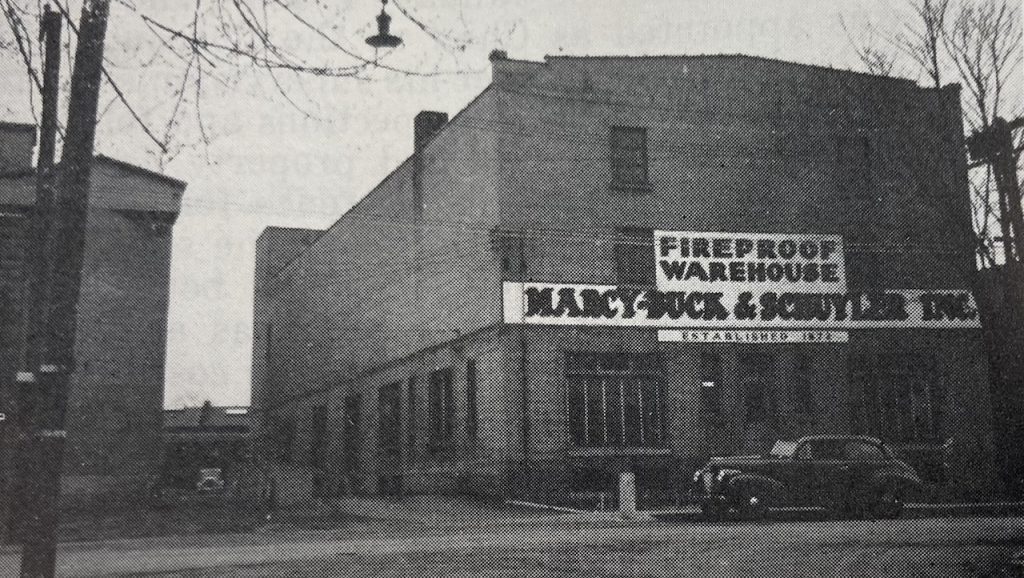
In July 1952, Mr. and Mrs. Harold I. Folsom purchased the Marcy-Buck Co. Mrs. Folsom had been associated with the company for twelve years as secretary and treasurer and would continue in those capacities. The purchase would include the property at 588 Morrison Street, the warehouse maintained at 436 Court Street, the coal sheds on Arch Street, and the R. J. Buck Coal Company, Inc., at 102 Mill Street.
Five years later, in 1957, Empire Petroleum Inc., which still owned the former train depot on the corner of Mill and Factory Streets, would sell its properties to the Esso Standard Oil Company along with several other locations in the city, including the former Colonial Beacon gas station at the junction of Coffeen and Court Streets abutting the Empire Flats Building.
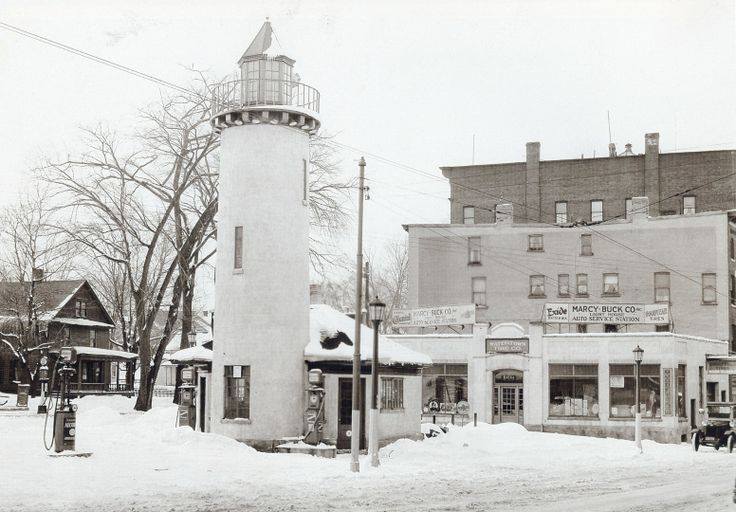
In 1962 the then-named Esso Gas Station on the corner of Mill and Factory would undergo renovations to meet city codes and regulations. The old roof and attic that had deteriorated over 91 years would be replaced with a modern, flat roof and the second floor, also in poor condition, would be repaired and have a new stairway installed.
The building would ultimately be demolished in 1967. At the time, aside from a service and gas station, it was also home to Depot Taxi. A Kentucky Fried Chicken franchise would be built in its place, operating at that location until moving to Arsenal Street in 1985.
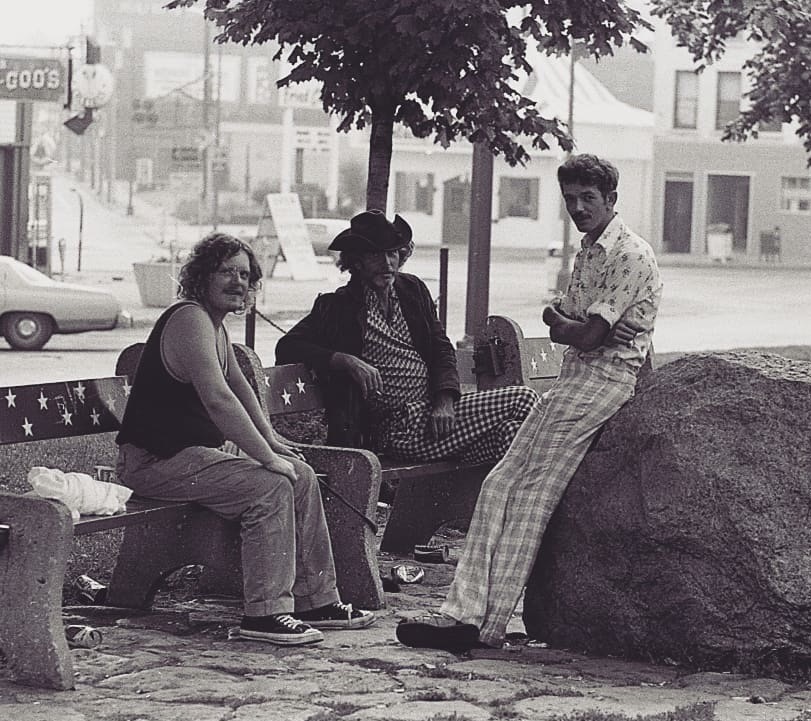
Engine 999 of the New York Central Empire Express Breaks World Record
The photograph below was taken by Charles E. Palmiter and printed in the Watertown Daily Times showing the 999 of the New York Central Empire State Express taken sometime between November 30 and December 11, 1893. The locomotive had stopped for an exhibition on the U. & B. Tracks between Mill and Polk Streets during those dates and Governor Roswell P. Flower and Mayor Hiram F. Inglehart were amongst the first to see it.
The Times would note in the accompanying article–
The 999, later running regularly on the St. Lawrence Division, had made the world’s record of 112.5 miles an hour May 10, 1893. She hauled two flat cars carrying DeWitt Clinton and Concord coaches, and three Wagner palace cars. This train occupied the new south siding between Mill and Polk Streets. The DeWitt Clinton locomotive, first in the state, weighed 6.5 tons against 102 (I don’t think these numbers are correct) for the 999 and made 15 miles and hour on a 17-mile run between Albany and Schenectady April 19, 1831.
The locomotive stopped in Watertown via Syracuse on the way back from the World’s Fair in Chicago. The 112.5 mph was between Batavia and Buffalo. In the photo below, the locomotive is against the backdrop of the First Baptist Church and the Marcy-Buck building to the right.
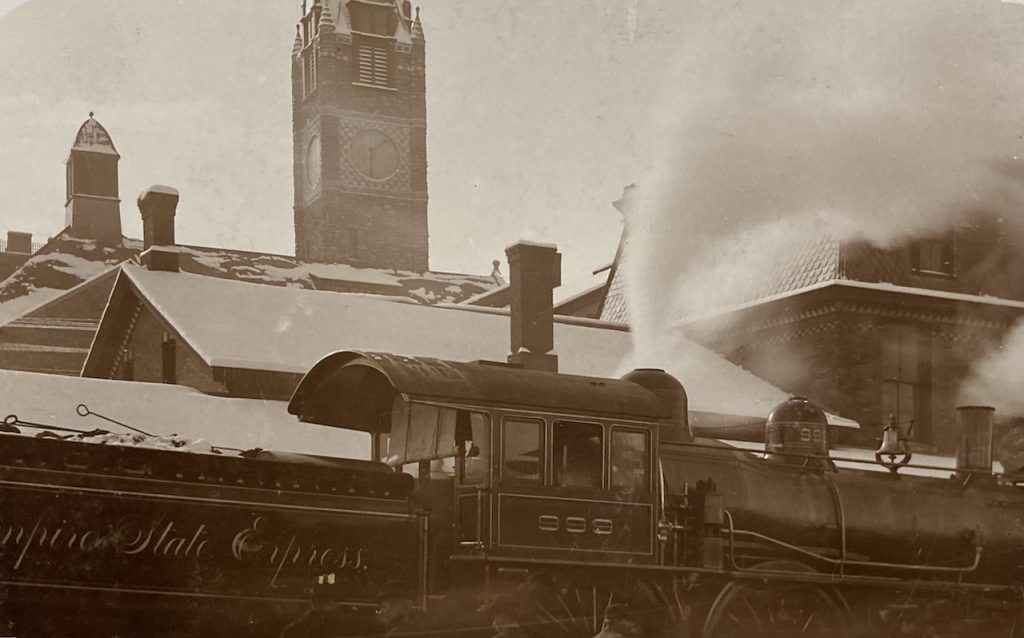
Interesting Tidbits
If the names Marcy and Buck sound familiar but you can’t quite place them, that’s because they’re both names of buildings in downtown Watertown. The Buck Building is a three-story red brick building with green awnings located at the beginning of the eastern block on Public Square where the First Baptist Church is. It’s the building that would have been nearest the Marcy-Buck building if it were standing today.
The Marcy building is a three-story red brick building with green awnings on lower State Street across from Armstrong Place and where the Eleanor Restaurant used to be.
